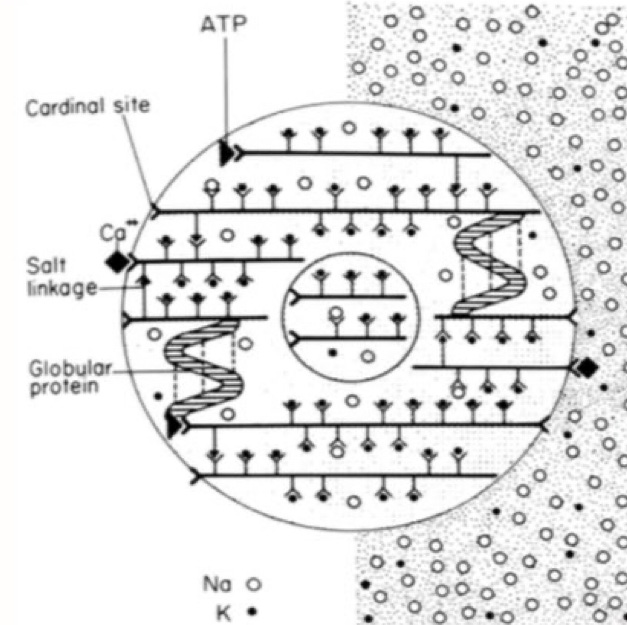Gilbert Ling: Structure and Function
Trying to learn and apply a different paradigm.
I think that Ray Peat’s words resonate with people for a reason. I think part of that reason can be back to his underlying understanding of biology; one that departs from mainstream dogma, yet makes far more sense of one’s individual experience. Within a paradigm that often dismisses experience in favor of abstractions, Ray Peat and his predecessors present an alternative.
The more I dig into Ray Peat’s original sources, the more I realize how brilliant he was in his ability to take complicated scientific information and bring it down to the practical level. His words were a lifeline to me while I was struggling physically, but the deeper theory underlying it, (especially Gilbert Ling’s understanding of the cell), now calls to me.
A aside on understanding Gilbert Ling’s books: His writings are extremely complicated (at least for me) and I found reading a few sources alongside his books and papers to be invaluable. The first is Gerald Pollack’s Cells, Gels and the Engines of Life. This book gives you the background on the terms at concepts that Gilbert Ling utilizes. The second is Kathleen Stewart’s substack, which I found helpful for explaining what Gilbert Ling was actually saying and also providing some of the physical implications.
In Gilbert Ling’s theory, cell water, rather than simply being a bag filled with fluid, assumes the dynamic structure of polarized multilayers. The majority of intracellular water exists as polarized multilayers adsorbed onto the surface of proteins, which actively control the distribution of ions like potassium and sodium within the cell, essentially dictating its physiological functions.
The three major components of all living cells are water, proteins and K+ (potassium.) In the association-induction hypothesis, the cell proteins are like the tethered nails; water and potassium are like the iron filings seen in the image below.
Structural change propagates as a local structural change produces an electron-cloud shift in a carbon chain, like a protein or polymer, which continues to the next region and propagates along the polymer. Another mechanism involves divalent cations (positively charged ions) that can grasp nearby Anionic sites and tightly cross-link one another because of their two positive charges. Calcium can link any two substances that come transiently close to one another by linking their Anionic sites, proceeding in a zipper-like fashion.
The structured protein-water-potassium-ATP systems in cells exist at a “high (negative) energy, low entropy” condition. It is the maintenance of this “high (negative) energy, low entropy state” that distinguishes the living state from the concept of life as organization qua organization.
Gilbert Ling writes:
“As proteins may stabilize water structures, so water may stabilize protein structures, depolarize them, separate them, or bind them together. If the water structures formed on two surfaces are confluent they will hold these surfaces together, forming a "water bond" between them. The water structures thus formed can be expected to have specific properties, and may have a decisive influence on the folding of fibrous protein molecules which determines their structure and function.”
In the membrane pump theory, generating negative entropy would not matter so much to the life of the cell. But if Gilbert Ling’s model is true, then the importance of negative entropy for life cannot be understated.
A living cell, according to the membrane pump theory, contains no more "negative entropy" than a dead one. Indeed, since a dead cell tends to be more rigid (rigor mortis), one might expect that the dead cell has more negative entropy than a live one. Yet Schrödinger firmly believed that negative entropy " keeps us from death.
The question then is, how to produce negative entropy? Adsorption of potassium as well as cell water restricts free motion and creates negative entropy, but we achieve the negative entropy indirectly. We consume foods with utilizable energy, or glucose, producing ATP, which in turn brings about the adsorption of potassium and intercellular water as the polarized oriented multilayers. Therefore ATP is crucial for cell structuring. A large rise of negative entropy is thus created and maintained in cells at their resting living state.
The vital role of metabolism is to make sure that each excursion of functional activity to a low (negative) energy and high entropy state be brought promptly and fully back to the initial high (negative) energy, low entropy resting living state.




